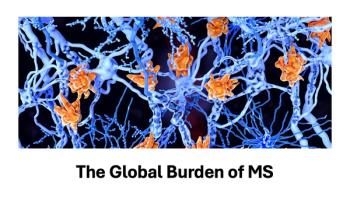
Express Scripts’ 2016 Drug Trend Report: 7 things to know
Report highlights spending trends in key areas, including specialty medications, oncology, diabetes, and inflammatory conditions.
Efforts to improve care and access and reduce costs can pay off for pharma, especially during a time when value-based care is being debated in terms of what form it takes or how it gets delivered.
According to Express Scripts’ latest annual
Stettin
“In a year where the issue of high drug prices was number one on the list of payer and policy maker concerns, the data show that our solutions protected our clients and patients,” says Glen Stettin, MD, senior vice president, clinical, research and new solutions, at Express Scripts.
U.S. drug spending increased just 3.8%, 27% less than in 2015. Between 2015 and 2016, nearly half of employers whose pharmacy benefits were managed by Express Scripts saw a year-over-year increase in per-person spending of less than 3.7%, and one-third of employers had a decrease in pharmacy spending.
For the second year in a row, patients of pharmacy plans managed by Express Scripts saw their total share of pharmacy costs decrease, despite using more prescriptions. Patients paid 14.6% of the total cost of a prescription medication in 2016, compared to 14.8% in 2015, as plan management programs enabled many employers to hold the line on copayments and deductibles. The average patient out-of-pocket cost for a 30-day prescription was $11.34 in 2016, roughly $0.10 more than in 2015.
Here are seven other key takeaways from the report:
1. List prices for brand drugs increased nearly 11% in 2016. Commercial plans managed by Express Scripts experienced only a 2.5% increase in unit costs across all prescription medications-nearly 22% lower than 2015, and more than 60% lower than the increase in prices, net of rebates, recently reported by major drug makers. Express Scripts’ Prescription Price Index shows continued inflation in the price of medications, with the average list price of the most commonly used brand drugs increasing nearly 11% in 2016. In contrast, price inflation for the most commonly used household goods is just 14% between 2008 and 2016. Prices for the most commonly used generic medications declined 8.7% in 2016.
2. Specialty drug spending is increasing-but at a slower pace. Express Scripts solutions helped to keep the increase in specialty drug spending to 13.3% in 2016-the lowest trend reported since it first included specialty medications in the annual analysis in 2003-and significantly less than the 17.8% trend in 2015. Specialty drugs accounted for more than one-third of total spending in 2016. Medications that treat inflammatory conditions and diabetes remain the costliest therapy classes. One of every $5 spent on prescription drugs was for medication to treat an inflammatory condition or diabetes.
3. Inflammatory condition medications continue cost increases. Employers paid, on average, $3,587.83 per prescription for a medication to treat an inflammatory condition, such as rheumatoid arthritis. Humira (adalimumab) and Enbrel (etanercept) were major trend drivers for the class, with unit cost increases between 10% and 18%.
“Despite having more than 15 available therapies in the class, these two medications accounted for approximately 70% of the market share in 2016,” Stettin says. “Biosimilar competition in this class could significantly ease spending for employers; however, delays in biosimilar availability have limited payers’ ability to achieve much relief.”
4. Diabetes medication spending continues to increase. Spending on diabetes medications increased 19.4% in 2016, driven by a 14.1% increase in unit cost. Total spending on insulins, which account for 40% of all diabetes spending, increased nearly 10% between 2015 and 2016. The average patient out-of-pocket cost for insulin was $36.69 per prescription (adjusted for difference in days’ supply), just $1.63 more than 2015.
5. Cancer medications continue to increase-particularly for oral oncology medications. In 2016, spending on oncology medications increased nearly 22%, making it the third-costliest class. Despite savings from generics, including imatinib, the generic for Gleevec, unit costs for oral oncology medications increased 9.6% in 2016.
List prices for oral oncology medications, which are not rebated or discounted to any significant extent, have doubled between 2011 and 2016, from $20 per unit to $40 per unit, according to the report.
6. Pain medication spending is driven by two brand-name medications. Pain medications are the fifth costliest class of drugs.
One in five people filled a prescription for a pain medication in 2016. Despite a 95% generic fill rate for this class of drugs, spending was driven by just two brand-name medications: Lyrica (pregabalin) and OxyContin (oxycodone).
7. Increases in contraceptives and depression medication utilization drive new trends. In 2016, contraceptives and medications for depression entered the top 15 classes of drugs driving spending. Increased utilization for both classes contributed most to the increased spending.
“The trends observed in these three leading therapy classes [inflammatory conditions, diabetes and oncology] demonstrate the need for different approaches to managing spend,” says Stettin.
Newsletter
Get the latest industry news, event updates, and more from Managed healthcare Executive.






















































